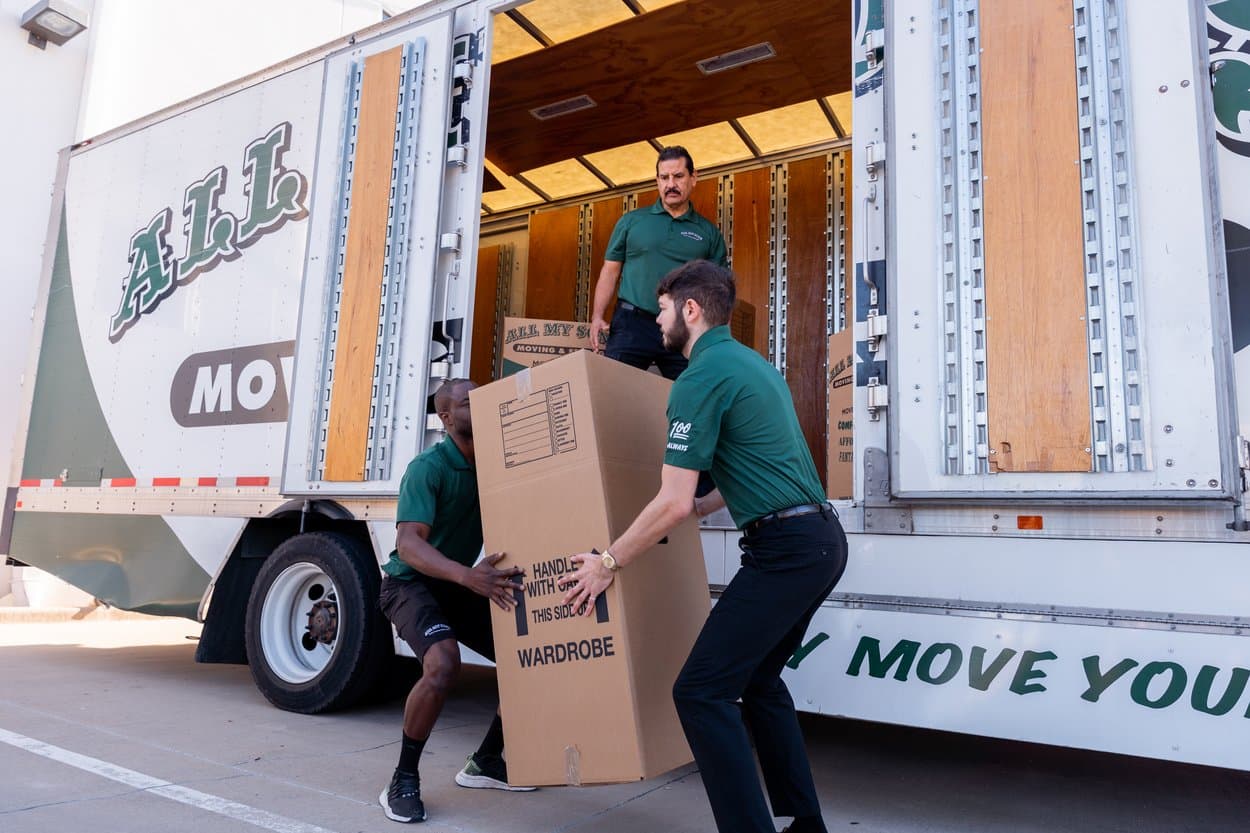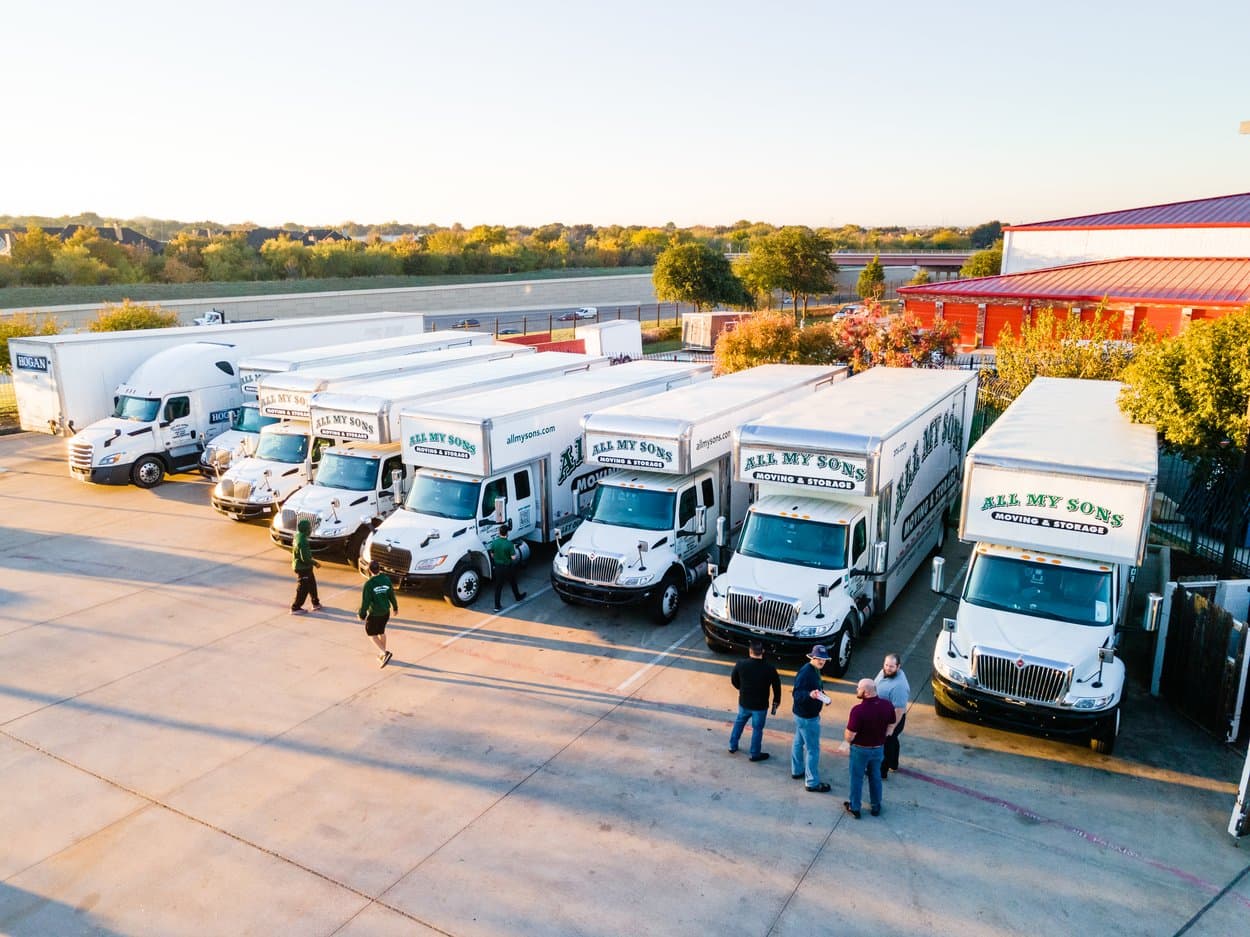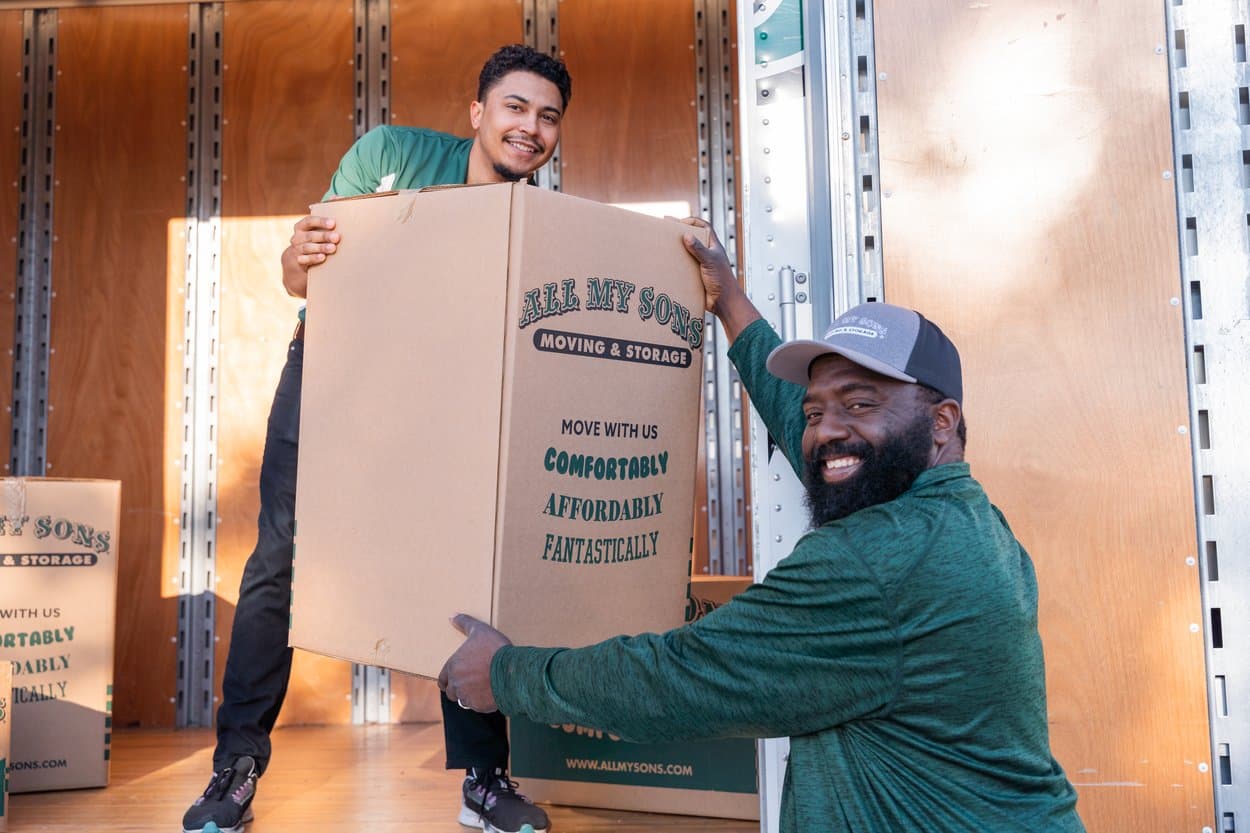Surprise: Moving Costs More Money
According to Forbes, a local move can cost anywhere from $300 to $1,500 and a long-distance move could set you back $2,500 to $5,000. How much your move costs will depend on how much you must move, the distance you have to travel, and how long it takes to pack everything up and then unload. Creating a budget for your move can help you make sure your finances stay in order while you move.
Maybe you’ve almost built out your moving budget, and you think you might be ready to start booking your movers and purchasing your supplies. But have you thought of all the potential expenses that can come with a move? Even the most careful planners still get caught off-guard by expenses they did not originally plan for.
At All My Sons Moving & Storage, we’ve been in the business of helping companies and families make a smooth relocation for almost 30 years. We know how valuable planning ahead can be, and we’ve compiled these moving guides to help you organize your move. One of the first items in your moving checklist might be to create a moving budget and determine how much you want to spend on each line item in your move. This guide can help you make sure you have every expense covered so you can start your move with confidence.
Typical Moving Expenses
These line items are easy to add to the spreadsheet, and you’re not likely to miss them. After all, your move cannot go forward unless you have boxes and movers. Even in these typical moving expenses, there are a few ways to pinch your pennies and make your money stretch a little farther.
1. Moving Supplies
The first thing you think of when you realize you’re going to move is probably all those moving boxes. One sure line item in your moving budget will be the cost of moving supplies like boxes, tape, packing paper, bubble wrap, and labels. The number of boxes you need will vary based on how many rooms you intend to pack and how much extra care your fragile items will require.
How to Save Money: You may be able to score free moving boxes and other supplies by asking around among friends and family. You never know when someone has stuff left over from their last move. Also check local neighborhood groups on social media to see if anyone who’s finished their move has boxes to give away. Then, when your move is done you can pay it forward by gifting your moving boxes to someone else who needs them.
2. Truck and other Equipment Rental
If you’re doing your own move, then the cost of the trunk rental will probably be the largest line item for you to consider. Rental trucks usually have a base rental charge of $20 to $100 per day plus fees, damage waiver options, and sometimes an additional charge per mile. You will also need to factor in rental costs for other important pieces of moving equipment like dollies or furniture pads. These items will make moving much faster and simpler.
How to Save Money: Carefully consider all the items you’re bringing with you on your move and ask yourself if it’s possible to downsize. The easiest way to save on your truck and equipment rental is to use the smallest truck that will work for your move. If there’s items that you can donate, give away, or sell before you move, offload those items and then your move will be smaller and a lot more manageable.
3. Movers
The average cost of hiring a moving company is between $300 and $6,900 for a local move and between $3,200 and $17,000 for a long-distance move. If you’re hiring a professional moving company, the good news is the cost of their equipment rental is usually factored into their rate, so you won’t have to calculate the two separately. While hiring pros can be more costly than the do-it-yourself option, you can save your back from heavy lifting and make your move with less stress. If you have the budget for it, you can even opt for professional packing services and have all your items boxed up by trained professionals.
How to Save Money: You probably shouldn’t skimp on your movers. Make sure you hire pros that are fully licensed and insured. If you would like to save some money and have some flexibility on the date of your move, try to move during the off-season which is between October and April. Remember, limiting the number of items you must move is a surefire way to make your move more manageable and save on time moving so always downsize before a move.
4. Security Deposits
A security deposit, or a rent deposit, is a sum that a renter pays to a landlord to ensure the unit is left in good condition. If you’re an apartment dweller or renting your next home, then the security deposit will likely be due upon move-in with your first month’s rent and any other rental costs. Thankfully, you can get a deposit back at the end of your tenancy provided there is no damage to your unit.
How to Save Money: When there’s no flexibility on how much the deposit will be, then take the necessary steps to ensure it is returned to you at the end of your rental period. When you move in, do inventory on any existing damage and make sure your landlord is aware of anything you find. Document those damages with pictures and video if you are able. On your move-out day, clean the unit thoroughly before you turn in your keys. Leave nothing behind, not even trash.
5. Storage Unit Rental
When your move requires storage, either short-term or long-term, you will need to consider the monthly cost of the storage unit in your budget. Be sure to consider these questions you should ask yourself before you rent a storage unit to make sure you get a unit that suits your needs right off the bat.
How to Save Money: Shop around to see what the going monthly rates are in your new home area. Carefully consider what amenities your items in storage will and won’t need. Hardy furniture can probably survive for a month or two in a drive-up storage unit, but your fine art may require a temperature-controlled unit. Downsize to ensure everything you store is stuff you want and need in your life and get the smallest unit that will work for your items.
6. Fuel Costs
Driving your rental equipment from point A to point B could set you back. Moving trucks guzzle gas, getting an average of just 6 to 12 miles to the gallon. Depending on your rental, you could be filling up with regular unleaded gas or the more expensive diesel. Be sure to check your rental contract to make sure you fill with the correct type of fuel. If you are towing a car behind your moving truck, be aware that will cut down how many miles you get to the gallon.
How to Save Money: Use the smallest truck that can manage your move and pack it efficiently. Downsize before your move to make your move more manageable and to cut down on the number of items you need to pack into your moving truck. Take the most fuel-efficient legal route to your destination.
Hidden Moving Expenses
Unlike your typical moving expenses, these common hidden moving expenses tend to get overlooked. These expenses might catch some movers by surprise, but with this guide you’ll be prepared to factor them into your budget.
1. Cleaning Fees
Renter beware, if you leave a mess in your old place, you could get hit with a hefty cleaning fee or lose a chunk of your deposit. The easiest way to avoid this is to do a thorough cleaning of your old place before you turn in your keys, and ensure that you leave nothing behind. To save yourself the headache of having to deal with cleaning, you might choose to hire a professional cleaning service.
How to Save Money: The easiest way to save money on cleaning costs is to take the do-it-yourself approach. Keep your cleaning equipment with your essentials and emergencies stash and give your unit the full treatment before you turn in your keys. Take any trash you accumulate during clean-out to the dumpster and ensure there is nothing left in the unit that belongs to you. If you cannot do the cleaning yourself, check to see if your complex offers any discounts or specials on move-out cleanings with local cleaning companies.
2. Repairs, Renovations, and Upgrades
It seems to happen to every new homeowner. They move in and something immediately breaks. The truth is that owning a home often means a never-ending list of repairs and maintenance. Over time, most homeowners learn to prioritize repairs, renovations, and upgrades as they become apparent needs.
How to Save Money: Repair the things that are hazards or will cause damage to other things immediately and let cosmetic issues wait. Keep your homeowner’s insurance up to date and check your policy to see if certain issues can be covered.
3. Changes in Insurance Premiums
You might be prepared for an increase in your homeowner’s or renter’s insurance with the new place but watch out for your car insurance rate as well. One of the factors companies use to calculate your rate is your zip code and the area’s claim history, and if you move zip codes then your insurance could go up. If you’re changing states, you also might need to factor in additional coverage that your previous state did not require.
How to Save Money: Look for the insurance companies offering the best rates in your new area and get quotes from them. Compare prices and coverage before purchasing a new policy that will suit your needs in your next home.
4. Startup Costs
Some services like your electricity or gas utilities may require a startup or connection fee while other services like internet and cable might require a fee for installation. Also beware of initiation fees at your new local gyms and recreational facilities.
How to Save Money: If you have flexibility over what utility and service companies you can choose, factor the startup cost into your final decision on what contract you will pick. Otherwise, reduce your regular usage by performing routine maintenance on all your appliances and choose energy-efficient options when available.
5. Restocking the Fridge
Transporting an entire fridge or freezer of food is a hassle, and we recommend you try to consume as much of your perishable food as possible before you move. Unfortunately, this also means that once you get to your new place, a full grocery shopping trip might be in order. It can easily cost hundreds of dollars to restock your food supply, not to mention all the money you might spend on take out before you’re able to stock the fridge back up.
How to Save Money: Save your pantry staples and transport them to your new place in grocery bags. If you’re doing a local move, you might be able to save a few of your refrigerated and frozen items, just pack them in insulated bags or coolers and get them put away as soon as your fridge and freezer are ready for them. When you take your re-stock trip, clip coupons and look for lower-priced items to reduce the final bill. To save money on take-out, pack some shelf-stable meals for yourself and your family to feed yourselves during the move and set up your kitchen essentials as soon as possible so you can start cooking again.
6. New Furniture, Appliances, and Décor Items
Picture this: You get all your stuff into your new home, and you realize there’s a huge gaping space in the living room. As it turns out, your new living room is so much bigger than your previous living room and you have room for an additional couch. Moving from one home to another often means that some things in your old home won’t work for your new home, and sometimes it won’t hit you until you’re looking at your fully furnished rooms. Some movers will relocate and realize they have space for that new coffee maker, a blank wall they want to decorate, or curtains they’d prefer their bedspread matched.
How to Save Money: If you’re truly strapped for cash at the end of your move, these items can typically wait. When you do decide you absolutely must have a new piece of furniture or appliance, you can save money by buying used items in good condition or taking items that friends and family are not using.
Built in the Budget: No Surprises Here
With these typical moving expenses and hidden moving expenses accounted for in your budget, you can move without breaking the bank. Plan ahead now to find out where you can cut costs and where you should pay for quality and peace of mind. Budget in hand, it’s time to move.
Don’t forget one of the biggest line items on your moving budget, your pro movers! Why not get a quote from All My Sons Moving & Storage? With almost 30 years in the business of relocation, our moving teams are extensively trained to handle all the heavy lifting of your move. Whether you’re moving local or long-distance, we have the moving services designed to meet both your needs and your budget. Need professional packing or doing a commercial move for a business? Go online to get a quote, or call your local All My Sons Moving & Storage to talk to one of our moving specialists.
Quick Moving Tips

How to Pack Clothes for a Move
All My Sons Moving & Storage provides professional packing services and has some special tips for packing your clothing for moving.

How to Make a Seamless Business Move
Tips for pulling off your business move from the experts in commercial moving services at All My Sons Moving & Storage.

How to Pack a Computer for a Move
Here are 5 steps that should help you get your computer secured for the move.


